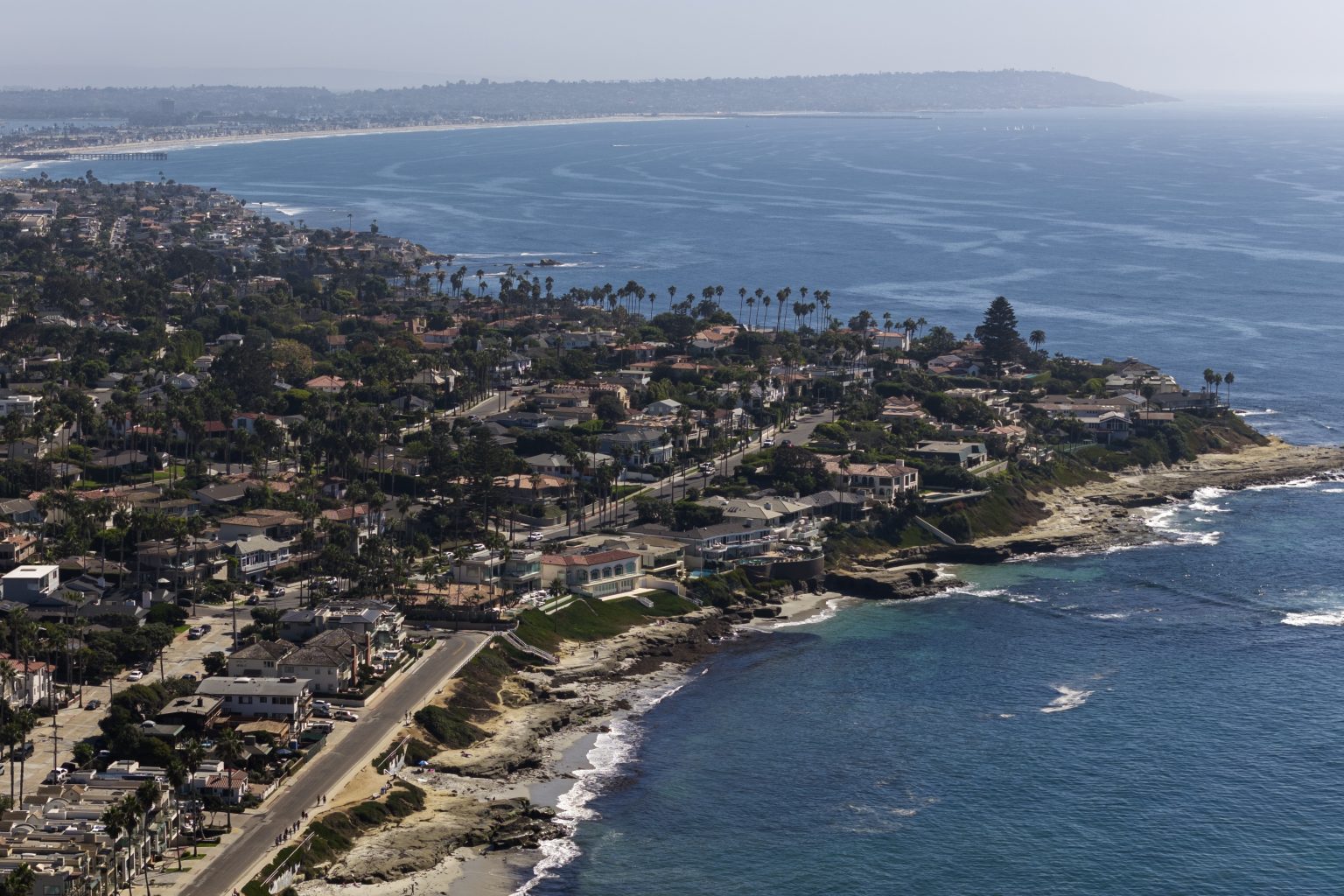California’s iconic coastline is facing a formidable challenge: shrinking beaches. Coastal erosion, driven by a complex interplay of natural processes and human activities, is steadily eating away at the state’s sandy shores, threatening not only recreational havens but also crucial ecological habitats and coastal infrastructure. A recent study paints a bleak picture, projecting that a significant portion, possibly as much as three-quarters, of California’s beaches could vanish by the end of the century. This impending crisis has spurred action, with local authorities and scientific experts working to understand the intricate dynamics of coastal sediment movement and develop strategies to mitigate the ongoing erosion.
In San Diego, a specialized task force is taking a novel approach to unravel the mysteries of sand transport along the coast. The Sediment Management Technical Taskforce, assembled by the San Diego Association of Governments (SANDAG), is focusing its efforts on the Oceanside littoral cell, a self-contained coastal unit that encompasses the sources, transport pathways, and sinks of sediment. This localized approach allows for a more granular understanding of the factors influencing beach erosion within a specific geographic area. The task force, composed of technical experts, coastal managers, and stakeholders, has embarked on a mission to identify critical data gaps, policy shortcomings, and challenges related to sediment management, ultimately aiming to preserve the region’s valuable shoreline.
One of the key recommendations emerging from the task force’s year-long investigation is the implementation of a “sand tracer study.” This innovative technique involves introducing fluorescent, non-toxic sand into the ocean and tracking its movement over time. By observing the dispersal patterns of the marked sand, researchers can gain valuable insights into the complex “dance” of sediment transport along the coast. This understanding is crucial for identifying areas where sand is being lost and for developing targeted strategies to retain and replenish beach sand. The tracer study is not a new concept; it has been successfully employed in various coastal regions around the world to decipher the intricate pathways of sediment movement.
The impetus behind this proposed study stems from the recognition of an “information gap” in current understanding of sand dynamics. While some locations along the coast appear to retain sand more effectively than others, the underlying reasons for this disparity remain elusive. The tracer study aims to bridge this knowledge gap by providing a clearer picture of how sand moves within sub-littoral cells, particularly in areas experiencing significant erosion. This information will be invaluable for informing the design of beach nourishment programs, sand bypassing operations, and other sediment retention measures. These interventions aim to replenish lost sand and stabilize eroding shorelines, ultimately protecting California’s beaches from further degradation.
The proposed sand tracer study is not just a scientific exercise; it has practical implications for coastal management. By understanding the intricate movements of sand, researchers can develop more effective strategies to combat beach erosion. The information gleaned from the study will inform the design of targeted interventions, such as beach nourishment programs and sand bypassing operations. Beach nourishment involves adding sand to depleted beaches, while sand bypassing aims to redirect sand that has been trapped by structures like jetties or harbors. These interventions, guided by the data from the tracer study, can help to restore and maintain the health of California’s beaches.
The SANDAG Shoreline Preservation Working Group has embraced the task force’s recommendations, signaling a commitment to incorporating these findings into future coastal management plans. The proposed tracer study, along with other recommendations, will be integrated into the Shoreline Management Program for the 2026 fiscal year. This proactive approach underscores the urgency of addressing coastal erosion and the importance of using scientific data to inform effective management strategies. As California’s beaches continue to face the threat of erosion, innovative approaches like the sand tracer study offer a glimmer of hope for preserving these vital coastal resources for future generations. The study represents a proactive step towards understanding and mitigating the ongoing erosion, safeguarding California’s iconic coastline in the face of a changing climate.

